The job burnout cycle is known as a career killer that can easily spin out of control. We’re offering you proven strategies to break the cycle.
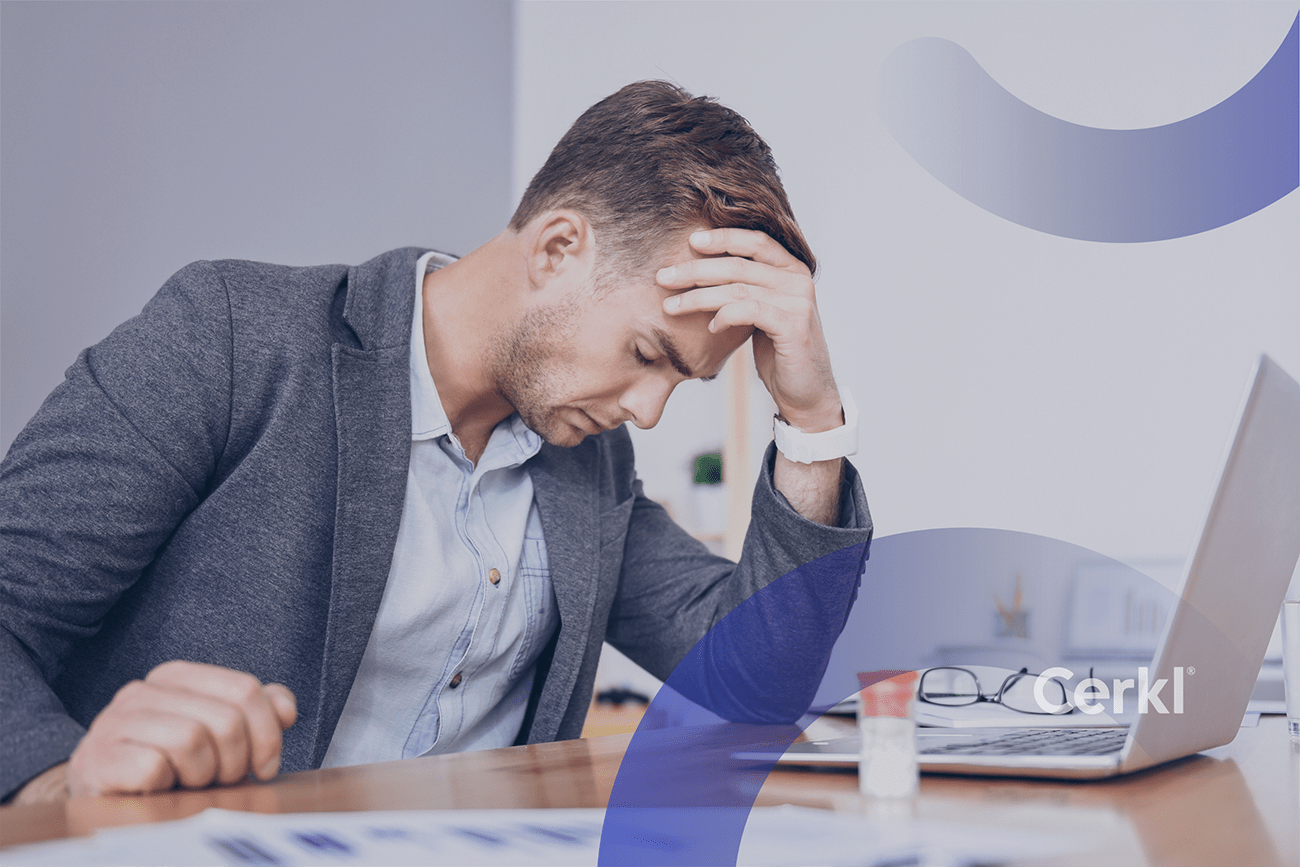
.png)
Strategy is an important component of internal communications. Ensure you’re communicating through the right channels at the right frequency with our Internal Communications Channel Audit worksheet.
Access NowEmployee burnout is on the rise globally. It is typified by chronic physical and mental exhaustion, reduction of energy, negativity or cynicism, and feelings of being ineffective. As such, burnout can significantly affect employee well-being and productivity.
The World Health Organization (WHO) recognizes burnout as “an occupational phenomenon.” For this reason, it isn’t classified as being a medical condition. WHO identifies it more precisely as “a syndrome” that has resulted “from chronic workplace stress that has not been successfully managed.” It is specifically a workplace phenomenon and they say it shouldn't be used to describe experiences that lead to similar symptoms in other areas of life.
I’m going to focus on the vicious burnout cycle. I aim to show how those in leadership roles can recognize burnout and the stress cycle in employees before it’s too late. I’m going to share some proven strategies you can use to break the cycle. It’s vital to measure and monitor employee well-being. So, I’m going to discuss ways that you can do this. A thorough understanding of these concepts can help organizations to foster a healthier, more productive work environment. It will also help to trigger a meaningful stress response.
In December 2023, global health and security service firm International SOS (ISOS) warned that an astounding 80% of senior risk professionals were predicting burnout would have a significant impact on employees during 2024. But alarmingly, only 41% of these professionals believe their organizations possess the necessary capabilities to address the threat.
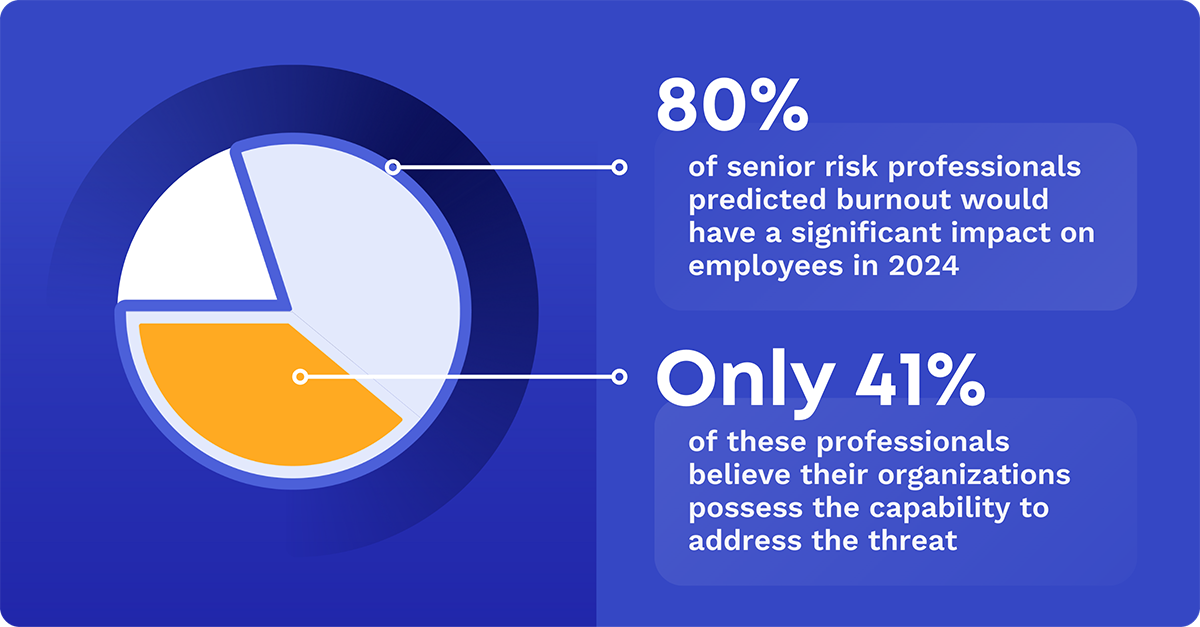
ISOS research identifies the major stress and burnout risk factors that face organizations. They are global instability, geopolitical turmoil, health issues relating to climate change, and risks of misinformation created by AI. Incredibly, 75% of the risk professionals they surveyed expect global crises, particularly the ongoing conflict in Israel and Gaza, and in Ukraine, to make a significant impact. More than 40% are concerned about the potential risks of disinformation and medical misinformation. More than a quarter say that warming global temperatures and climate change is already affecting their operations. They predict it’s going to be an ongoing challenge.
All these factors can impact employees if potential stress isn’t controlled in the workplace.
The ISOS message is that organizations must provide more than basic occupational health services for working conditions. It’s their responsibility to safeguard and restore the well-being of employees. They also need to adopt robust security measures to make them feel safe — and keep them safe. They must have plans in place that focus on any “novel medical risks.”
Of course, there are more direct “psychologically hazardous factors” in the workplace that result in burnout. In Your Burnout Is Trying to Tell You Something, published in Harvard Business Review (HBR), Kandi Wiens identifies burnout triggers. A researcher and executive coach, she says these include a lack of autonomy. She points out that no two burnout experiences are exactly the same. Also, you need to identify the workplace conditions that are causing your stress. More importantly, employees mustn’t blame themselves for work-related stress and burnout, she says.
Upgrade your company’s internal comms to enhance employee communication
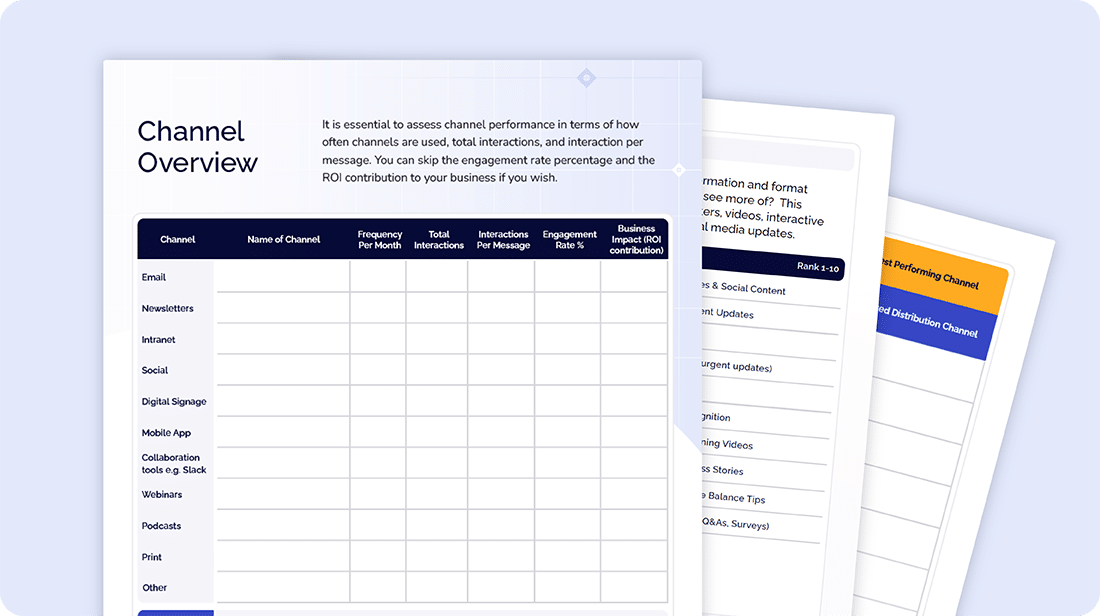
The burnout cycle is a process that individuals experience. It is also what some people describe as an “infinite cycle” of burnout within organizations. For individuals, it starts with an overwhelming amount of work and stress that leads to a state of physical and mental exhaustion. The cycle is often a recurring series of stages that spin the individual into a circle of stress, fatigue, reduced productivity, and detachment.
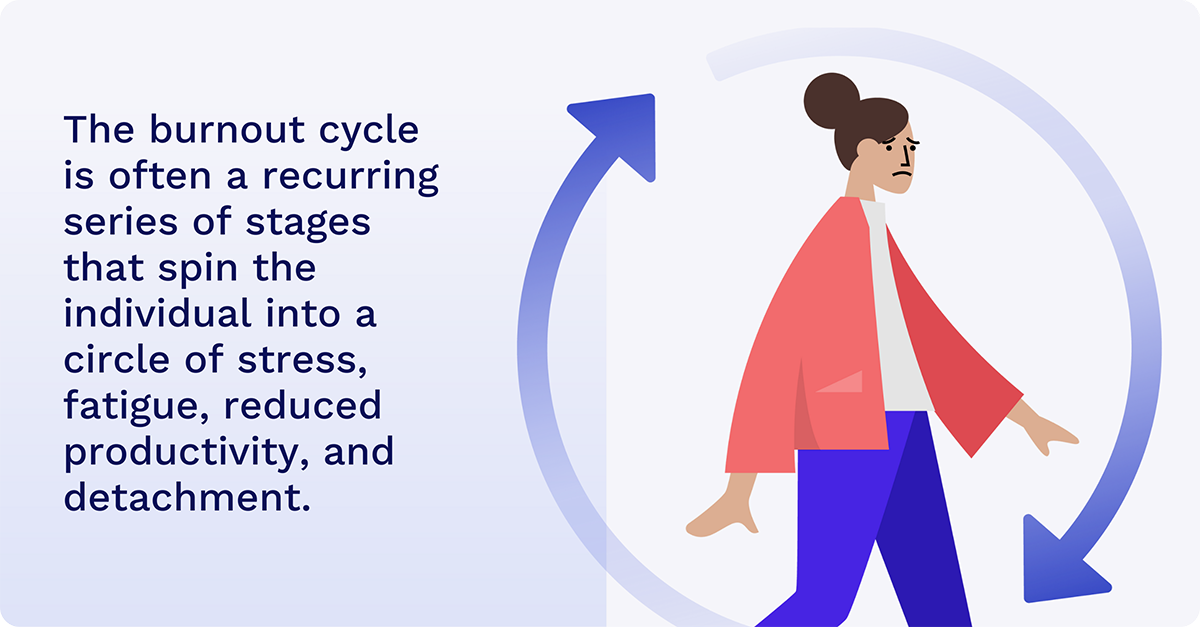
At an organizational level, it presents a much broader cycle that involves many individuals and can threaten the organization as a whole.
Experts often split the burnout cycle into different stages for a better understanding of the progression of burnout. The first stage is sometimes called the honeymoon phase because individuals are enthusiastic about their work. Gradually, as the workload or pressure of work increases, the initial excitement turns into stress. Then people start showing physical, emotional, and mental symptoms like anxiety, irritability, and fatigue. This is known as the “onset of stress” phase.
As the burnout cycle progresses, chronic symptoms begin to disrupt productivity, eventually leading to chronic stress. As the cycle intensifies, it culminates in burnout proper. This phase sees professionals who were previously achieving and successful, losing motivation and becoming less productive. Eventually many become disillusioned with the tasks they are given to do.
Writing about a “new outlook on burnout” in Forbes, prolific author and Professor Emeritus at the University of North Carolina at Charlotte, Bryan Robinson describes “job burnout” as “both a people killer and a career killer.” But he emphasizes that stress and burnout are not the same. “The fatigue that comes with burnout is different from the stress you might have after a long day or week’s work. The fatigue can be so severe that it’s crippling.”
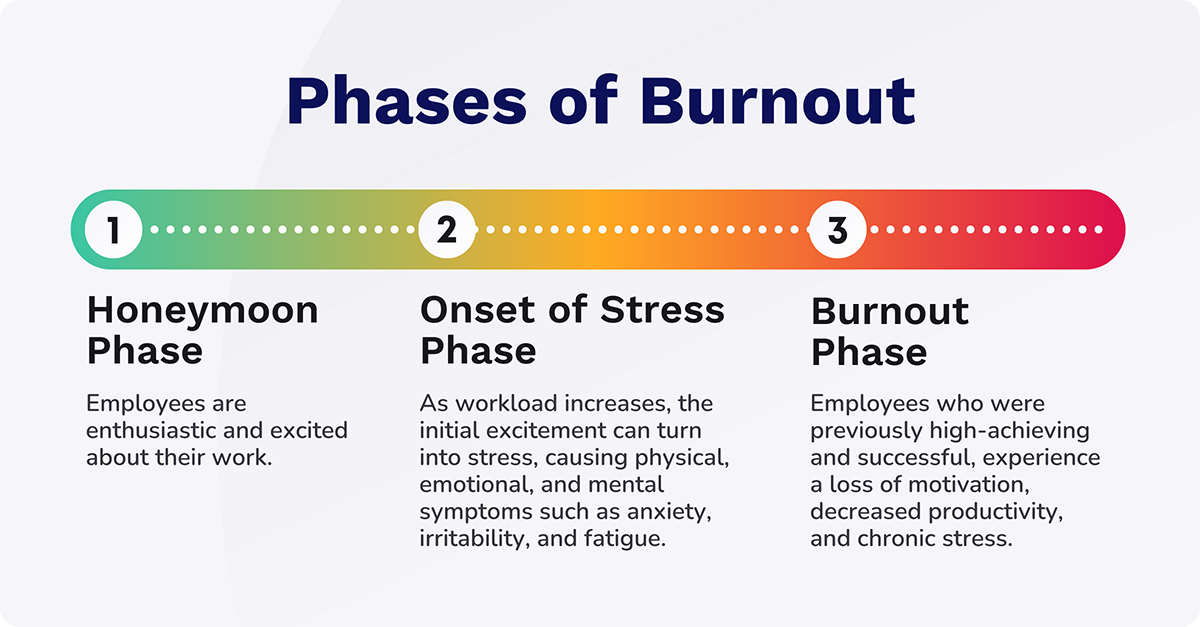
Canadian HR research firm, McLean & Company recommends that rather than emphasizing individual employees organizations should take responsibility. Quoted in an article in HR Dive, they state that burnout isn’t “truly” addressed at an organizational level.
Kelly Berte, the company’s director of HR Research & Advisory Services describes an “infinite cycle” of burnout. She describes how it forms a loop of employees who are experiencing, semi-experiencing, and then re-experiencing burnout. The only way to address this continuing burnout and stress cycle is to shift the responsibility to the organization. It is essential to identify and address root causes and to support employee well-being and health.
The manager of this same department, Grace Ewles, stresses that organizational initiatives need commitment and ongoing effort. There needs to be a definite alignment between the norms, daily processes, and leadership behaviors within the organization.
Several factors play a role in starting and fuelling the burnout cycle, making it worse and worse. A significant cause involves workloads that overwhelm employees. Another relates to unrealistic expectations that raise stress levels. Work-life routines that aren’t balanced also play a crucial role. In this case, professionals spend excessive time working and they tend to neglect their personal lives. This can lead to emotional exhaustion.
Workplace dynamics such as poor communication, low job satisfaction, lack of control or autonomy, and minimal growth opportunities also commonly lead to burnout.
Recognizing burnout in its early stages is key to taking proactive steps toward intervention and prevention. Administrators, managers, or colleagues need to focus on the signs and symptoms of burnout to ensure the signs of burnout are recognized and acted on early on.
Physical symptoms may include chronic fatigue, insomnia, and frequent illness caused by decreased immunity. Emotional signs often show up as anxiety, depression, irritability, and an apathetic lack of interest. Changes in behavior include reduced performance, absenteeism, and employees isolating themselves.
Gallup’s 2023 Guide to Engaging and Retaining Employees highlights how important it is to identify signs of burnout. This is one of their top seven tips to engage and retain employees. They advise considering the workload of every employee and reducing it if necessary. Gallup also suggests assessing employees’ work styles. They say it’s a good idea to ask individual employees what kind of additional support they need.
“Burnout is a career killer. And the top causes of burnout occur when managers don’t help workers prioritize or manage their time, energy, and tasks.” Gallup
While burnout starts in a seemingly harmless way, it can easily spiral out of control. Also writing for Forbes, professor of human behavior and innovative executive coach, Melody Wilding discusses the 12 stages of burnout developed by psychologist Herbert Freudenberger in 1974. They are:
She urges individuals to be aware of these stages and to try and identify them to stop the downward spiral.
The burnout cycle not only impacts work productivity but also the overall well-being of individuals. It leads to both physical and mental health issues.
Employees suffering from burnout often have decreased job satisfaction, their performance deteriorates, and they have less commitment towards their jobs. Emotional intelligence gets hit badly too. All of this leads to strained workplace relationships, making the problem even worse.
More specifically, typical physical symptoms include:
Typical mental health issues include:
Upgrade your company’s internal comms to enhance employee communication

Addressing burnout requires a multi-pronged strategy that aims to promote the development of employee well-being that is holistic. Interventions have to target work-life balance, internal communication, the availability of resources, flexibility, and a range of well-being initiatives.
Here are five strategies that organizations should try.
Companies need to foster policies that encourage a good work-life balance. Examples include flexible working hours, remote work options, and the possibility to be absent from work. These strategies help employees to recharge and spend quality time outside work. This effectively reduces stress and prevents burnout.
The Qualtrics 2023 Employee Experience Trends report states that when employees have a good work-life balance they’re 20% more likely to have higher than average well-being scores. They are also 16% less likely to be at risk of experiencing burnout. Additionally, they are 23% more likely to have higher engagement scores.
Promoting a transparent work environment can lessen concerns and doubts, reducing stress levels. Frequent team meetings, one-on-one discussions with managers, and open-door policies can all contribute to open communication. Providing platforms for voicing concerns and constructive feedback can break down burnout walls.
As Mike Harbour, a leadership coach and author of books on the topic advises: “If you want to retain your top employees, you must take burnout out of the picture. Most leaders resort to increased pay to get rid of burnout when the true solution lies in the leader's expression of gratitude.”
So, communicate!
Employees must be given access to the necessary tools, resources, and the support they need to do their jobs adequately. This includes technology, information, and mentorship.
Allowing employees to be autonomous in their roles can improve employee engagement and satisfaction, making burnout risks less severe. Flexible schedules, the ability to make their own decisions, and opportunities for personal growth can all help to reduce stress and improve work satisfaction.
Organizations need to invest in employee well-being initiatives such as fitness programs, mental health resources, including access to online psychiatrists, and health-conscious policies.. Prioritizing these proactive steps can do a lot to promote overall well-being and help prevent burnout.

Measuring and monitoring employee well-being is essential. It helps to ensure that the implemented strategies are effective and makes it easier to identify areas that can be improved.
Regular surveys are great for gauging employee satisfaction, stress levels, and the effectiveness of well-being initiatives. They also provide useful insights. When you ask for feedback from employees, you are encouraging them to express their thoughts and concerns. Feedback is invaluable because it provides input that organizations can use to refine their strategies.
Monitoring progress over time helps to determine the success of strategies companies put into practice. They also help leadership determine whether changes are necessary. For instance, if work-life balance policies aren't reducing burnout rates, it may be necessary to adjust strategies. Another option may be to focus more on social support or job design changes. After all, continual evaluation and adaptation are essential if you are going to succeed in eliminating the burnout cycle permanently.
Cerkl Broadcast offers an outstanding engagement platform tailored to combat burnout and enhance employee well-being within your organization. With features designed to personalize communication, including tailored messaging and optimized scheduling, Broadcast ensures that each employee receives relevant updates at the most opportune times. Moreover, it facilitates employee engagement through robust feedback mechanisms, enabling leadership to acknowledge and celebrate employee achievements effectively.
Through feedback and analytics tools, Broadcast empowers organizations to assess the impact of internal communication strategies on burnout and other stress-related issues. By providing data-driven insights, it enables informed decision-making, fostering continuous improvement and adaptation of communication strategies to meet evolving needs. Ultimately, by identifying early burnout symptoms, organizations can take action quickly and effectively.
Our Broadcast communication platform will help you do this.
To gauge the effectiveness of your current internal communications strategy in helping to combat burnout, consider conducting a strategic internal communications audit. We offer a complimentary, hassle-free audit template that, once complete, will provide valuable insights.
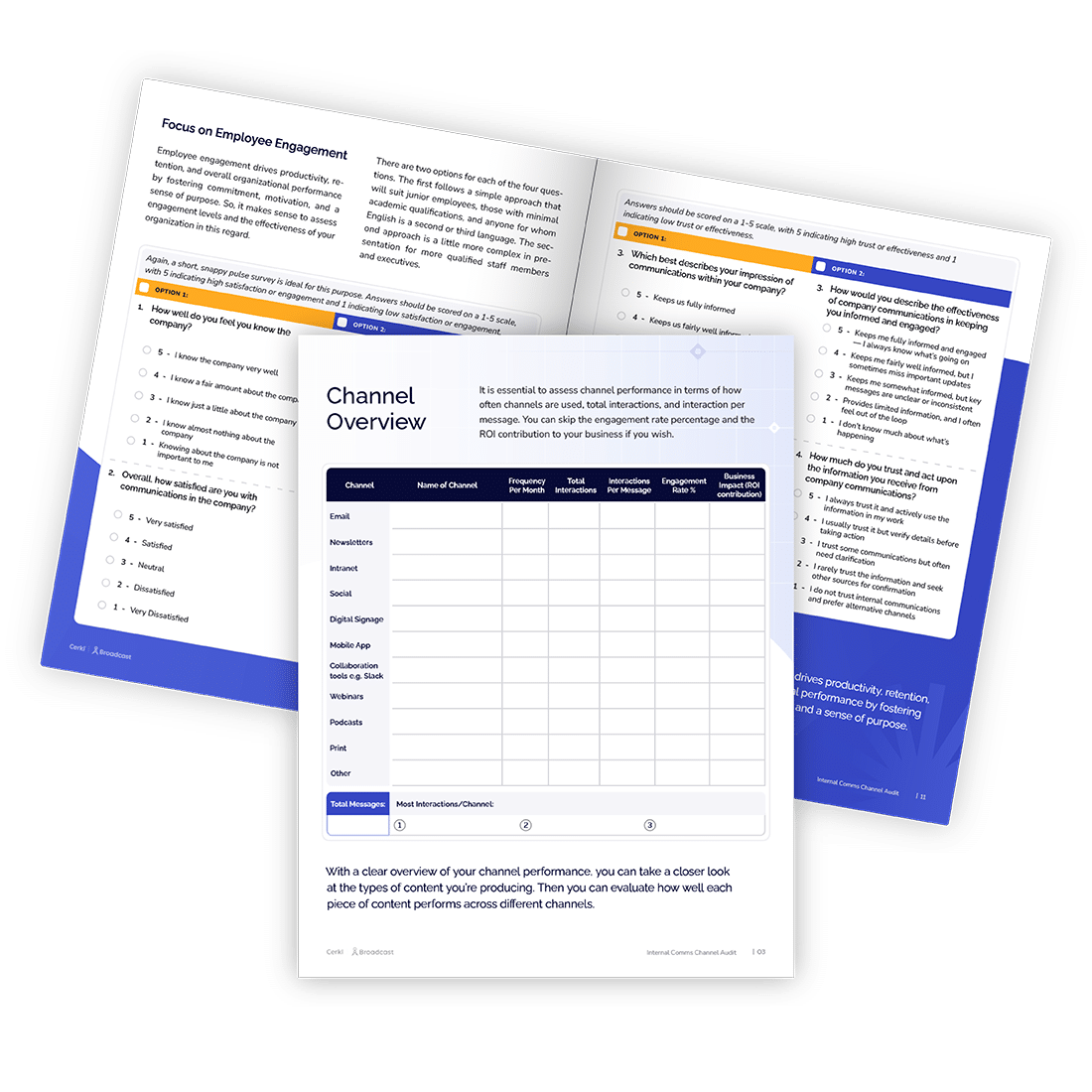
Upgrade your company’s internal comms to enhance employee communication
How do you break a burnout cycle? Breaking a burnout cycle involves prioritizing self-care, setting boundaries, and getting support from friends, family, or professionals. This will help to identify and minimize underlying stressors.
How long does burnout last? The length of time burnout lasts varies. It can last for weeks or months. Recovery often depends on individual factors, the severity of burnout, and the effectiveness of coping strategies.
How do you tell if you are burnt out? Signs of burnout include chronic fatigue, decreased motivation, feelings of cynicism or detachment, reduced performance, and physical symptoms like headaches or insomnia.
What is burnout syndrome? Burnout syndrome is a state of chronic physical and emotional exhaustion. It is often caused by prolonged stress and excessive workload, particularly in demanding work environments.

Upgrade your company’s internal comms to enhance employee communication